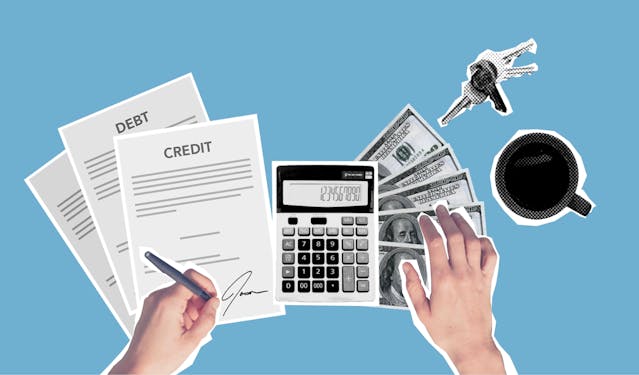Refinancing is a financial strategy that involves replacing an existing loan with a new one, usually with different terms and conditions. This can be beneficial for a number of reasons, including securing a lower interest rate, accessing better loan features, or consolidating multiple debts into one. Refinancing is not a one-size-fits-all solution, so it’s important to consider your personal financial situation and goals.
Why Refinance?
Refinancing can offer several advantages that may make it an attractive option for borrowers. For instance, if interest rates have dropped since you took out your original loan, refinancing could allow you to take advantage of these lower rates, potentially saving you money on your monthly payments and overall interest costs.
Types of Refinancing
There are different types of refinancing options available, each suited to different financial needs. Rate-and-term refinancing allows you to adjust the interest rate and term of your loan without changing the loan amount. Cash-out refinancing enables you to take out a loan larger than the amount you currently owe and receive the difference in cash, which can be used for home improvements, debt consolidation, or other financial needs.
Preparing for Refinancing
Before jumping into refinancing, it’s important to prepare. This includes reviewing your current loan terms, understanding your credit score, and determining your financial goals. Additionally, you’ll want to gather necessary financial documents and consider the potential impact on your taxes and long-term financial plans.

Common Mistakes to Avoid When Refinancing
Refinancing can be a complex process, and there are several common pitfalls that borrowers may encounter. By identifying these potential mistakes, you can take proactive steps to avoid them and ensure that your refinancing decision is a sound one.
Mistake #1: Not Considering Your Credit Score
Your credit score is a critical factor in the refinancing process, as it influences the interest rates and terms lenders are willing to offer you. A high credit score can lead to more favorable terms, while a low score can result in less attractive options.
Understanding Your Credit Score
Your credit score is a numerical representation of your creditworthiness, based on your credit history. Lenders use this score to assess the risk of lending to you. It’s crucial to understand how your credit score is calculated and what factors contribute to it, such as payment history, credit utilization, and the length of your credit history.
Read more on Understanding Your Credit Score.
Improving Your Credit Score Before Refinancing
If your credit score is not where you’d like it to be, it’s important to take steps to improve it before applying for refinancing. This might include paying down existing debt, ensuring all bills are paid on time, and avoiding new credit inquiries in the months leading up to your refinancing application.
The Impact of Credit Score on Refinancing
A lower credit score can lead to higher interest rates or even disqualification from certain refinancing options. Conversely, a higher score can unlock better rates and terms, potentially saving you a significant amount of money over the life of your new loan.

Mistake #2: Not Shopping Around for the Best Rate
It’s a common misconception that your current lender will always offer the best refinancing terms. However, this is not necessarily the case, and failing to shop around can be costly.
The Importance of Comparison Shopping
By comparing rates and terms from multiple lenders, you can ensure that you’re getting the best possible deal. This can involve checking with different banks, credit unions, and online lenders to see who offers the most competitive rates.
How to Effectively Shop for Rates
When shopping for rates, it’s important to compare apples to apples. This means looking at loans with similar terms and fees. Be sure to also consider customer service and lender reputation, as these can affect your overall experience.
Utilizing Online Tools and Resources
There are numerous online tools and resources available that can help you compare rates from various lenders quickly and easily. These tools often provide personalized quotes based on your credit score and financial situation, which can simplify the process of finding the best rate.

Mistake #3: Not Understanding the Costs of Refinancing
Refinancing can come with a variety of costs that borrowers may not anticipate. Understanding and accounting for these costs is crucial to determining whether refinancing is financially worthwhile.
Closing Costs and Fees
Just like with your original loan, refinancing typically involves closing costs and fees. These may include application fees, origination fees, appraisal fees, title insurance, and others. It’s important to ask lenders for a detailed breakdown of these costs upfront.
The Break-Even Point
Calculating the break-even point—the point at which your savings from refinancing exceed the costs—is essential. This will help you determine how long you need to stay in your home or keep the loan to benefit from refinancing.
Hidden Costs
In addition to the obvious fees, there may be hidden costs associated with refinancing, such as prepayment penalties on your old loan or transfer taxes. Make sure to read the fine print and ask your lender about any potential hidden costs.
Mistake #4: Not Considering the Long-Term Impact
Refinancing can have significant long-term implications for your financial health, and it’s important to take a holistic view when considering this option.
Read More tips on The Dos and Don’ts of Credit Cards.
Extending the Loan Term
While refinancing might offer a lower monthly payment by extending the term of your loan, it can also result in paying more interest over time. It’s important to consider whether the short-term cash flow relief is worth the long-term cost.
The Total Interest Paid
A critical factor to consider when refinancing is the total amount of interest you’ll pay over the life of the loan. Even if your monthly payment decreases, if the term of your loan is extended, you might end up paying more in interest.
Prepayment Penalties and Loan Terms
Some loans come with prepayment penalties that can make refinancing less attractive. Understanding the terms of your current loan and any penalties for early repayment is essential before deciding to refinance.
How to Avoid These Mistakes
Armed with knowledge about common refinancing mistakes, let’s explore some strategies to help you navigate the refinancing process and make decisions that align with your financial goals.
Tip #1: Do Your Research
Thorough research is the foundation of any successful refinancing decision. By understanding the market and available options, you can make informed choices that benefit your financial situation.
Understand Current Market Rates
Keeping an eye on current market rates is crucial as they can fluctuate over time. Knowing when rates are favorable can help you time your refinancing to maximize potential savings.
Learn About Loan Types and Features
Different loan types and features can serve various financial needs. Whether it’s a fixed-rate or adjustable-rate mortgage, a cash-out refinance, or a government-backed loan, understanding the pros and cons of each option is key.
Use Financial Calculators
Financial calculators can be invaluable tools for assessing the potential savings and costs associated with refinancing. They can help you estimate monthly payments, interest savings, and the break-even point based on different scenarios.
Tip #2: Know Your Goals
Before diving into refinancing, it’s crucial to have a clear understanding of what you aim to achieve. This will guide your choices and help you find the refinancing option that best aligns with your objectives.
Define Your Financial Objectives
Are you looking to lower your monthly payments, pay off your loan faster, or tap into your home’s equity for a large purchase? Defining your goals will help you focus your refinancing efforts and choose the right loan product.
Align Goals with Loan Terms
Once you’ve established your goals, look for loan terms that support them. For example, if you want to pay off your loan more quickly, you might opt for a shorter loan term with higher monthly payments.
Reevaluate Your Financial Situation
Your financial situation may have changed since you took out your original loan. Reevaluating your current finances and future prospects can help you determine if refinancing is the right move and which terms will best serve your needs.
Tip #3: Consider the Total Cost
When assessing the potential benefits of refinancing, it’s essential to take into account the total cost, not just the monthly payment or interest rate.
Factor in All Fees and Closing Costs
Make sure to include all fees and closing costs in your calculations. This will give you a more accurate picture of the true cost of refinancing and whether it’s financially advantageous.
Calculate Long-Term Savings vs. Immediate Costs
Compare the long-term savings you might achieve through lower interest rates against the immediate costs of refinancing. This will help you determine if the savings justify the costs and if refinancing aligns with your long-term financial plan.
Don’t Overlook Opportunity Costs
Refinancing can tie up resources that might be used elsewhere, such as investing or paying down higher-interest debt. Consider the opportunity cost of the money you’ll spend on refinancing and whether those funds could be better utilized.
Tip #4: Work on Improving Your Credit Score
As previously discussed, your credit score has a significant impact on your refinancing options. Taking proactive steps to improve your credit can open up better opportunities and terms.
Review Your Credit Report for Errors
Regularly review your credit report for any errors or discrepancies that could negatively affect your score. If you find any, dispute them with the credit bureau to have them corrected.
Manage Credit Utilization
Credit utilization—the ratio of your credit card balances to their limits—is a key factor in your credit score. Aim to keep this ratio low by paying down balances and not maxing out your cards.
Establish a Solid Payment History
On-time payments are the most important factor in your credit score. Set up reminders or automatic payments to ensure you never miss a due date and build a positive payment history.
Tip #5: Consult with a Financial Professional
Navigating the refinancing process can be complex, and seeking guidance from a financial professional can be a wise investment.
The Benefits of Professional Advice
A financial advisor can provide personalized advice based on your unique financial situation. They can help you understand the nuances of different refinancing options and the implications for your long-term financial health.
Finding the Right Professional
Look for a financial advisor or mortgage broker with a strong track record and expertise in refinancing. Personal recommendations, online reviews, and professional credentials can help you find a reputable advisor.
Weighing the Cost of Professional Services
While there is a cost associated with hiring a financial professional, their expertise can help you avoid costly mistakes and could potentially save you a significant amount of money over the life of your loan.
Real-Life Examples of Successful Refinancing
Seeing real-life examples can help illustrate the potential benefits of refinancing when done correctly. Here are two scenarios where refinancing had a positive impact.
Debt Consolidation
Samantha was struggling with high-interest debt from multiple sources. By refinancing her mortgage, she was able to consolidate her debts and significantly lower her overall interest payments.
Samantha’s Situation
Samantha had a mortgage, high-interest credit card debt, and a personal loan. Her monthly payments were overwhelming, and she was paying a substantial amount in interest each month.
The Refinancing Solution
By refinancing her mortgage, Samantha was able to obtain a lower interest rate and use the additional funds from a cash-out refinance to pay off her credit cards and personal loan.
The Outcome
With her debt consolidated into one lower-interest loan, Samantha’s monthly payments became more manageable, and she saved thousands in interest, improving her financial stability.
Conclusion
Refinancing can be a powerful financial tool when used strategically and thoughtfully. By avoiding common mistakes such as neglecting your credit score, failing to shop around for the best rate, underestimating the costs involved, and overlooking the long-term implications, borrowers can make sound refinancing decisions that align with their financial goals. It is essential to conduct thorough research, define clear objectives, consider the total cost, work on




























